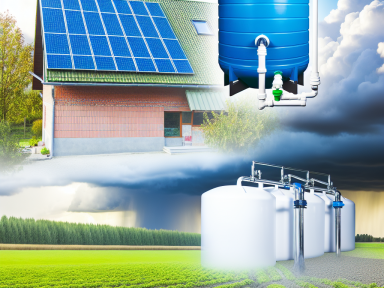The Imperative of Harvesting Rainwater
In the face of escalating water scarcity and the unpredictability of climate patterns, the ability to collect and utilize rainwater has transformed from a mere eco-friendly suggestion to an essential survival strategy for homesteaders. In regions where water restrictions and droughts have become the norm, harnessing rainwater is not just economical; it is a critical measure for sustainability and self-sufficiency.
Understanding Rainwater Harvesting
Rainwater harvesting encompasses the collecting, storing, and managing of rainwater for household, agricultural, and landscaping use. This method not only helps in reducing dependence on local water supply systems but also decreases the impact of runoff on the environment.
Getting Started with Rainwater Harvesting
1. Assess Your Requirements
Before plunging into rainwater harvesting, evaluate your water usage. Understanding how much water your household consumes daily will help you determine the size and complexity of the system needed.
2. Collecting Rainwater
- Gutters and Downspouts: Install gutters and downspouts that channel water from your roof into a collection system. Ensure they are clean and debris-free to prevent contamination.
- Rain Barrels: Place rain barrels at downspout outlets to capture runoff. These barrels can be linked to multiply storage capacity.
- Cisterns: For larger scale collection, use cisterns which can be installed underground or above ground depending on space and budget.
3. Storage Solutions
Storing rainwater effectively involves choosing the right containers and maintaining them to prevent algae growth and mosquito breeding. Opaque containers with secure lids are preferable to maintain water quality. Regular cleaning and disinfection are crucial to ensure the water remains safe for use.
4. Filtration and Treatment
To make rainwater suitable for indoor use, consider installing filtration and disinfection systems. Simple sand filters, charcoal filters, and UV purification can drastically improve the quality of harvested rainwater.
Practical Applications of Rainwater on Your Homestead
- Irrigation: Use stored rainwater for watering your garden and crops. Rainwater is free of salts and chemicals found in municipal water, making it excellent for plant health.
- Livestock: Rainwater can also serve as a water source for your livestock. This not only reduces your utility bills but ensures your animals have constant access to water during dry spells.
- Household Chores: Employ rainwater for tasks such as washing clothes, flushing toilets, and even showering if properly filtered.
The Broader Benefits
By implementing a rainwater harvesting system, you are contributing to a more sustainable lifestyle, lessening the burden on municipal water systems, and establishing a resilient homestead that can withstand environmental and economic perturbations. Moreover, in times of severe water scarcity, your proactive measures could literally become a lifeline.
Final Thoughts
Rainwater harvesting is not merely a technical shift in how you manage water but a fundamental aspect of preparedness and environmental stewardship. In an era where water scarcity can suddenly become a dire issue, waiting until a crisis arises is not an option. Setting up a rainwater harvesting system today is an act of foresight that secures a more sustainable and independent tomorrow for your homestead.




GIPHY App Key not set. Please check settings